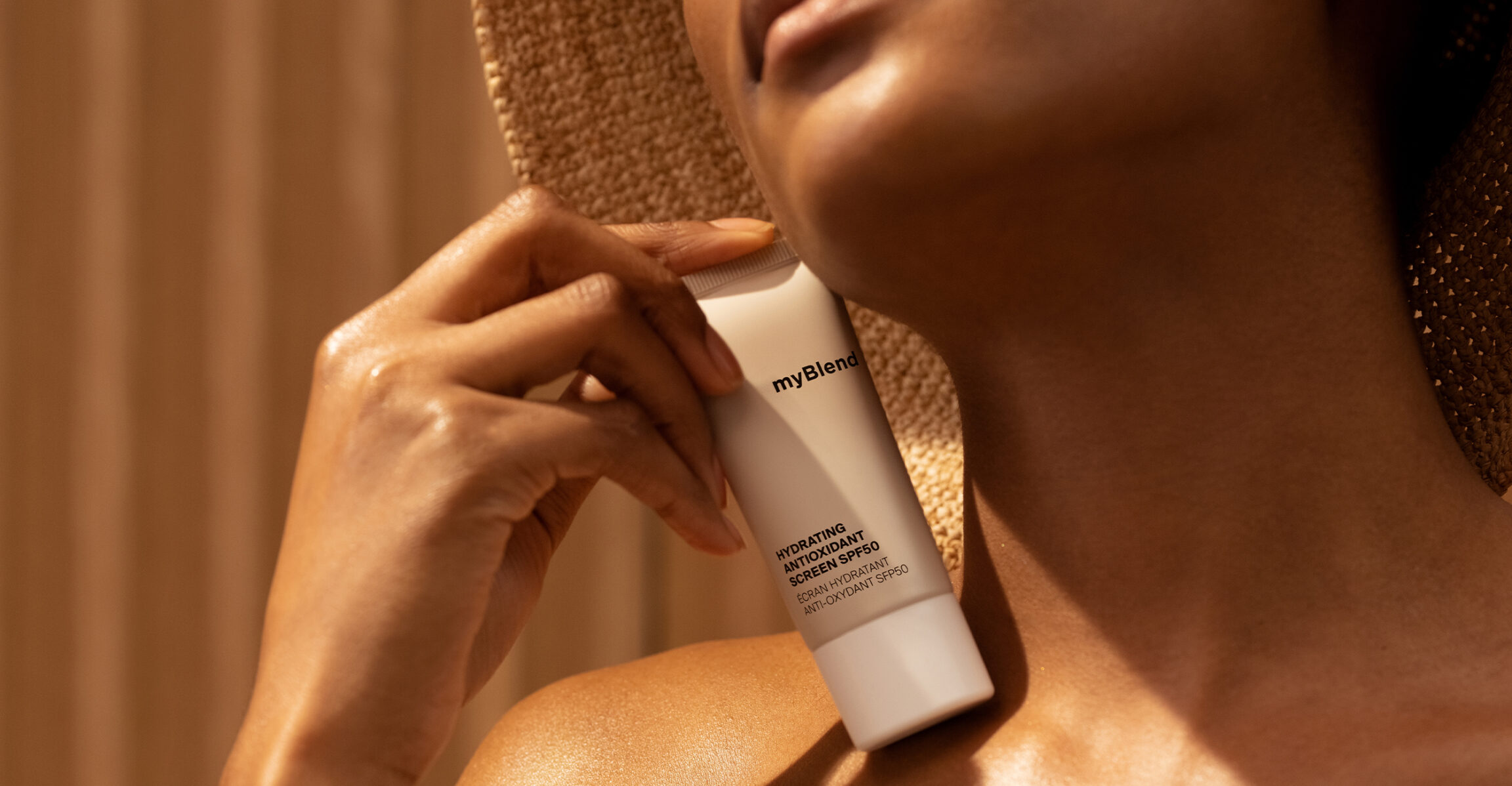


Experts / scientists
June 21st, 2023
the sun and its effects on the skin : let’s get facts straight !
By Florence Masson, dermatologist specializing in aesthetic medicine.
When the sun comes out, it is difficult to resist the temptation to take long walks and go swimming outdoors. Even though exercise is great for the physique and mind, the sun’s rays are far from harmless…
But how do they really affect the skin? Are all forms of UV the same? You may not consider these questions when you go out in the sun, but knowing the answers means you are better prepared! Here are some key facts to make sure you stay well-protected this summer.
SUN AND RADIATION: WHAT DO YOU NEED TO KNOW?
Solar radiation refers to the electromagnetic waves emitted by the sun: X and gamma rays, visible light, infrared and ultraviolet. The shorter the wavelength, the stronger the energy released! Let’s put X and gamma rays to one side. Even though they are extremely dangerous for the body, fortunately for us, they are stopped in their tracks by the ozone layer. We’ll also skim over visible light – which is quite simply the kind which allows us to see around us – and infrared, both of which are powerful vectors for heat and keep the average temperature on the Earth’s surface at 17°C. We’re turning our attention to UV!
WHAT ARE THE DIFFERENT TYPES OF UV?
UVA rays: not as harmless as you might think…
These make up 95% of the UV radiation that reaches the planet… and therefore your skin! Less powerful than UVB rays (they have a longer wavelength) but at least 20 times more abundant, they penetrate deep inside the epidermis and are renowned for their effect on skin ageing. Because by producing free radicals, which change the structure of collagen and elastin, they cause wrinkles and pigmentation spots. But they don’t stop there: recent studies show that they might also promote the development of certain skin diseases… You’ve been warned!
UVB : More aggressive than UVA
With 1,000 times more energy but only an average wavelength, these reach the upper layers of the epidermis. While they do bring about a nice long-term tan because they stimulate melanin production, they also cause sunburn and most skin cancers.
UVC : the most harmful
These are completely blocked by the atmosphere, and that’s good news for our health!
What is the UV index?
UV index: health warning!
Announced in weather reports, this scale from 1 to 12 was developed by the WHO (World Health Organization) and is used to measure the intensity of ultraviolet radiation in the atmosphere, and the danger it might cause to the body. Many factors can influence this index, such as season, cloud cover, latitude or even the state of the ozone layer. But as soon as it reaches 3, remember to apply sunscreen!

HOW DOES THE SKIN REACT TO UV EXPOSURE?
It triggers its own defence and regulation mechanisms in the form of sunburn… or tanning! UVB generates a series of inflammatory reactions such as redness, which appear within six hours after exposure. Your body sends the right signals! If you apply protection immediately, the damage to your cells will be minimal and quickly repaired. But don’t get sunburnt too often! You run the risk of undermining your “sun capital”, i.e. your skin’s ability to protect itself by synthesising melanin, which can stop some of the rays. Your tan is therefore a natural reaction against UV rays. But be careful: it only provides protection against sunshine with an index of 3 to 5!
FOCUS ON THE SKIN
Your skin in summer
You have probably noticed that the texture of your skin changes in the sun: in fact, it thickens to filter UV more effectively and protect the cells between the epidermis and the dermis. It is also oilier because it secretes sweat and sebum. That helps limit UV-ray penetration by absorbing and reflecting ultraviolet light.
IS EVERYONE EQUAL IN THE SUN?
Clearly not: it all depends on your phototype! The colour of the skin, hair and eyes, and a person’s sensitivity to the sun all make up their phototype, which determines how much and what type of melanin they produce. There are several different forms. While eumelanin (blackish brown in colour) is responsible for dark skin, pheomelanin (yellowish red or yellow) is found in people with very fair skin and redheads. More sensitive to the sun, they run a higher risk of cancer and therefore need stronger protection than dark skin, which, because it contains much more melanin, naturally filters UV rays… But that doesn’t mean they’re exempt from applying sun cream!
Knowing your phototype is therefore one of the tools to taking care of your skin in the sun. Understanding the effects of different UV rays helps to protect against them better. So you can enjoy the summer without sunburn, and tan with complete peace of mind!